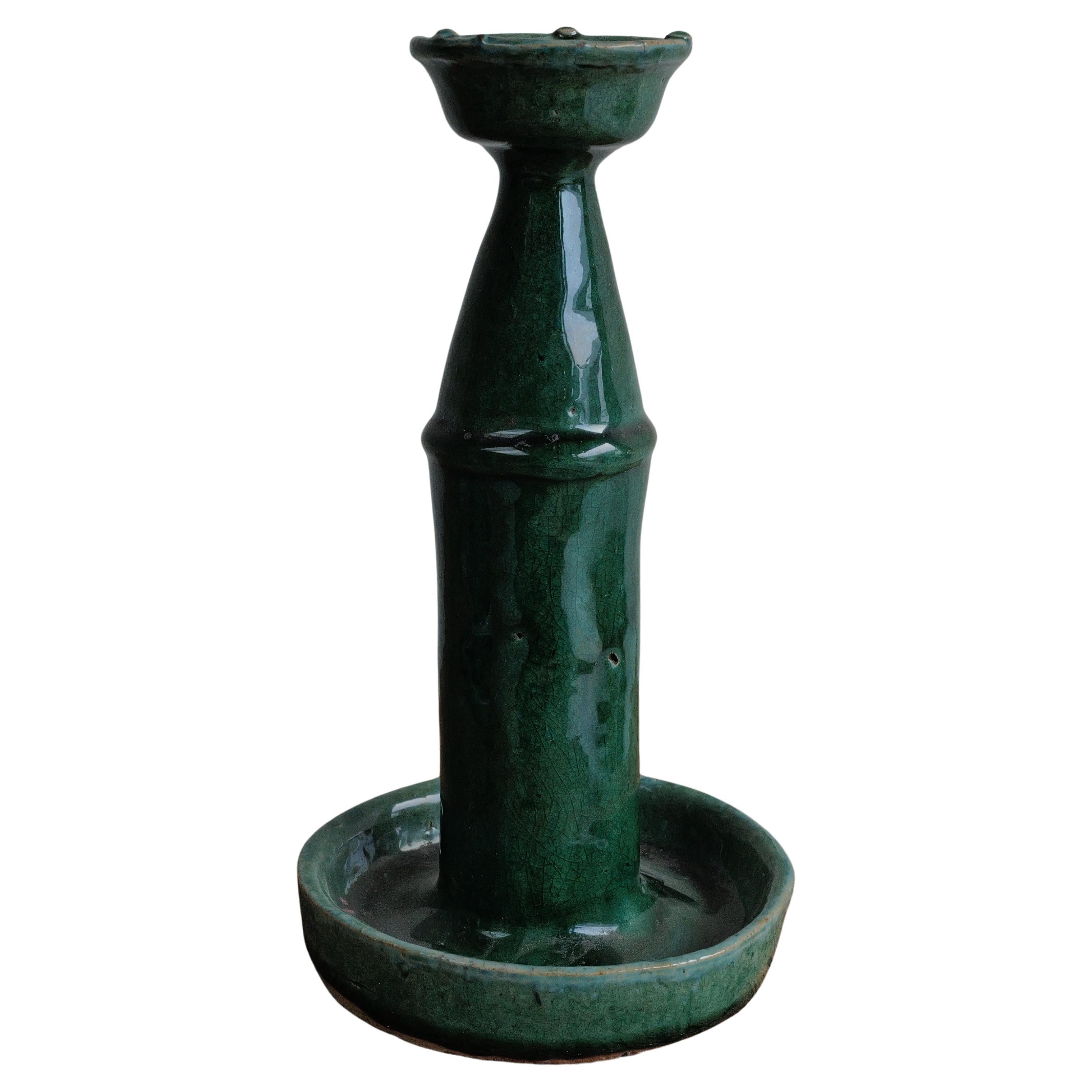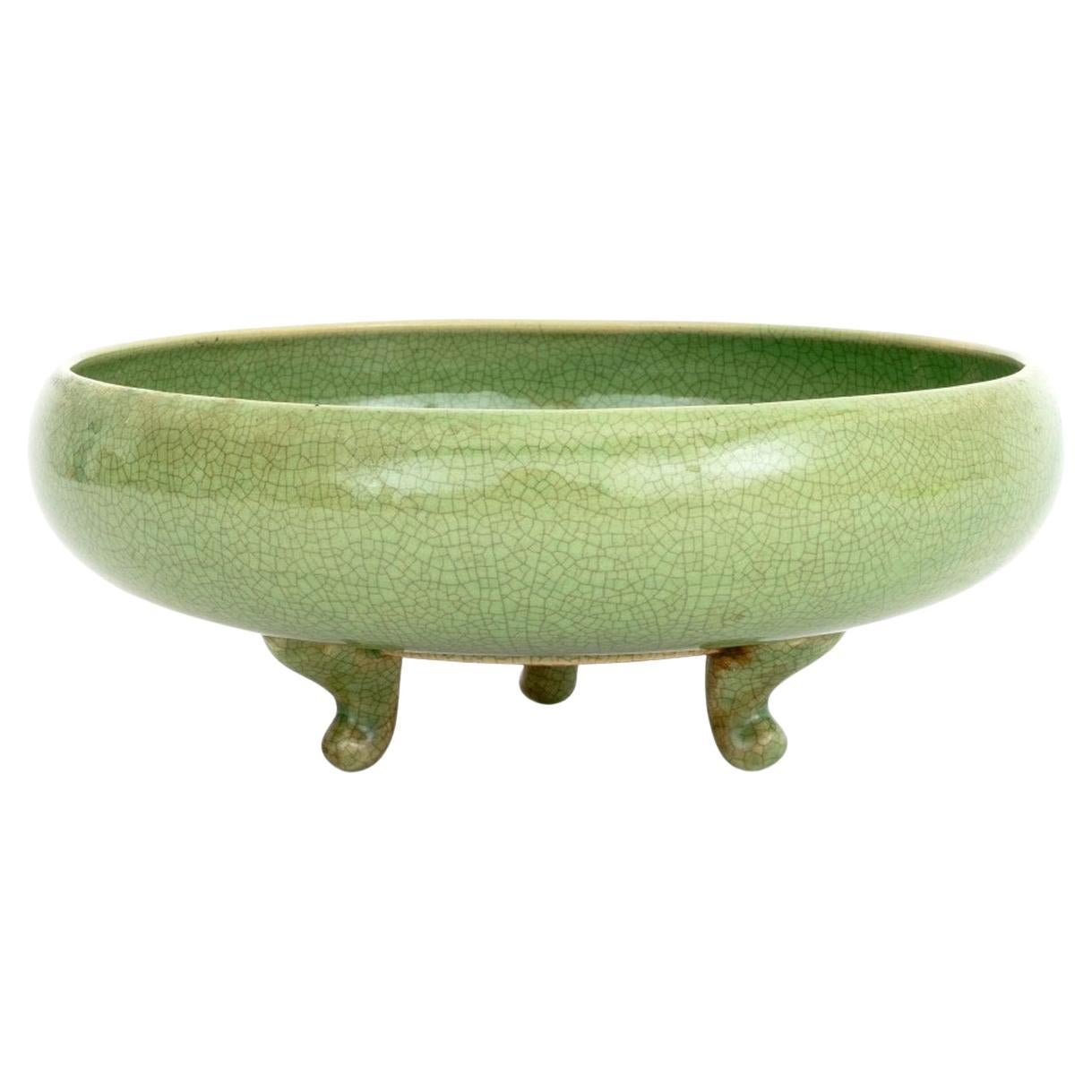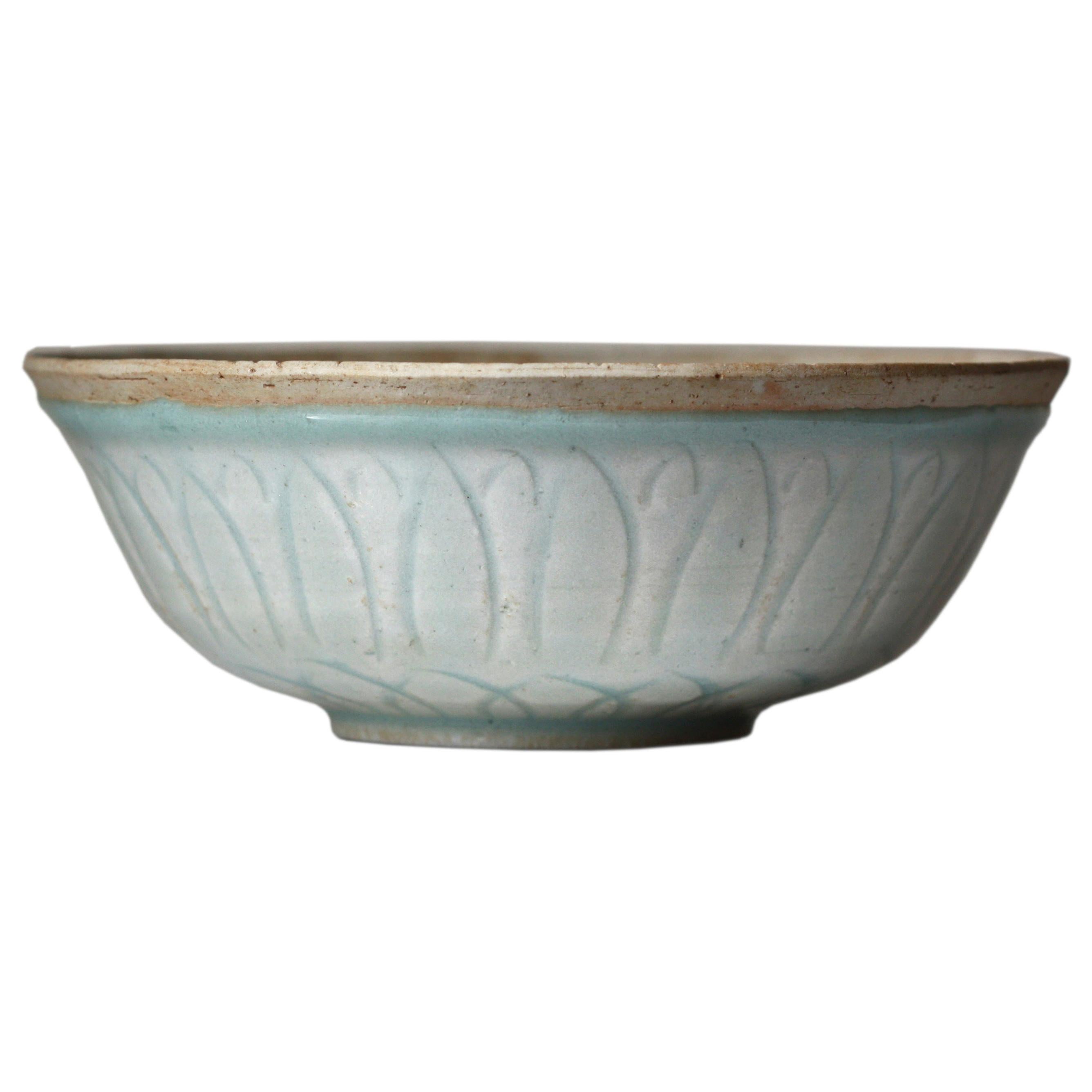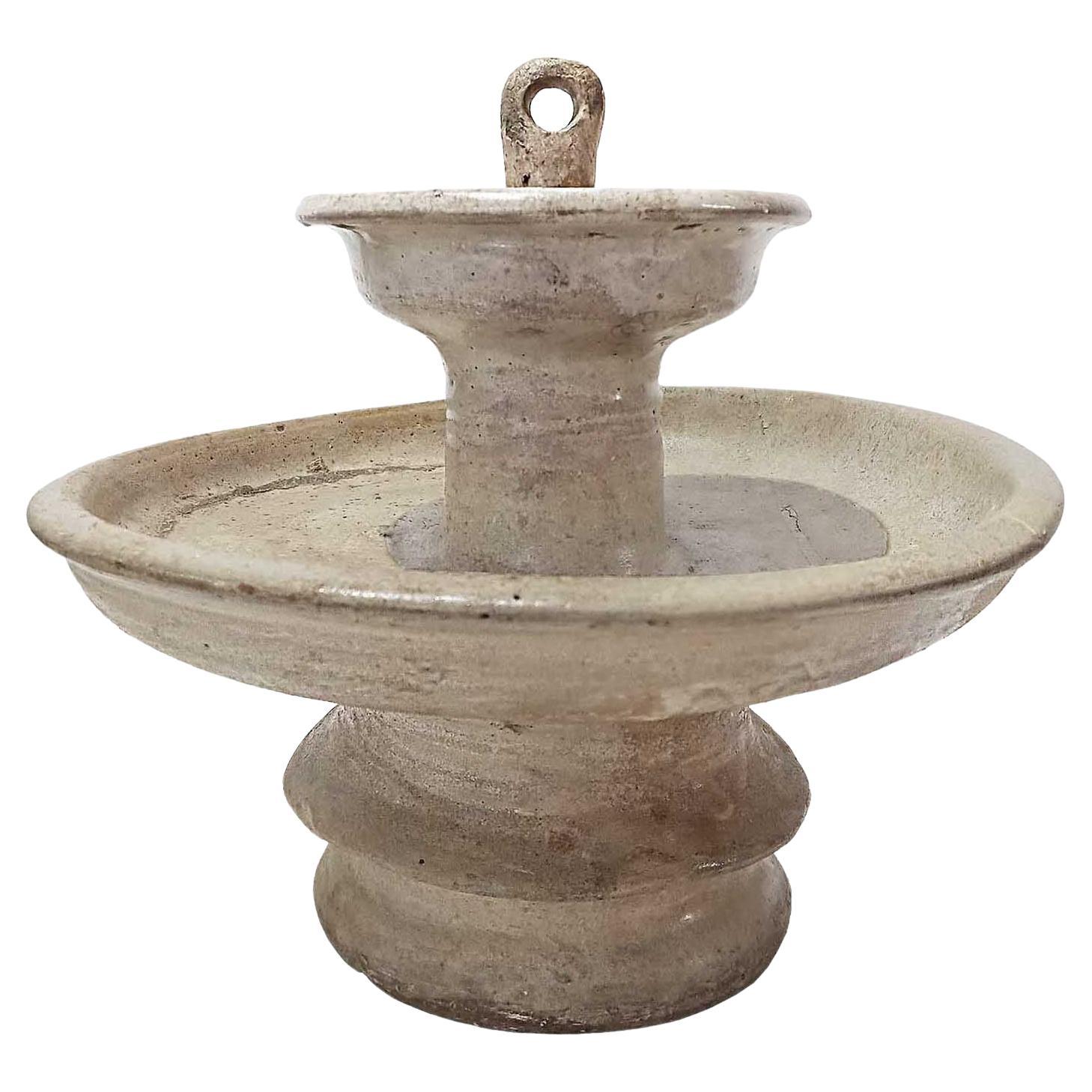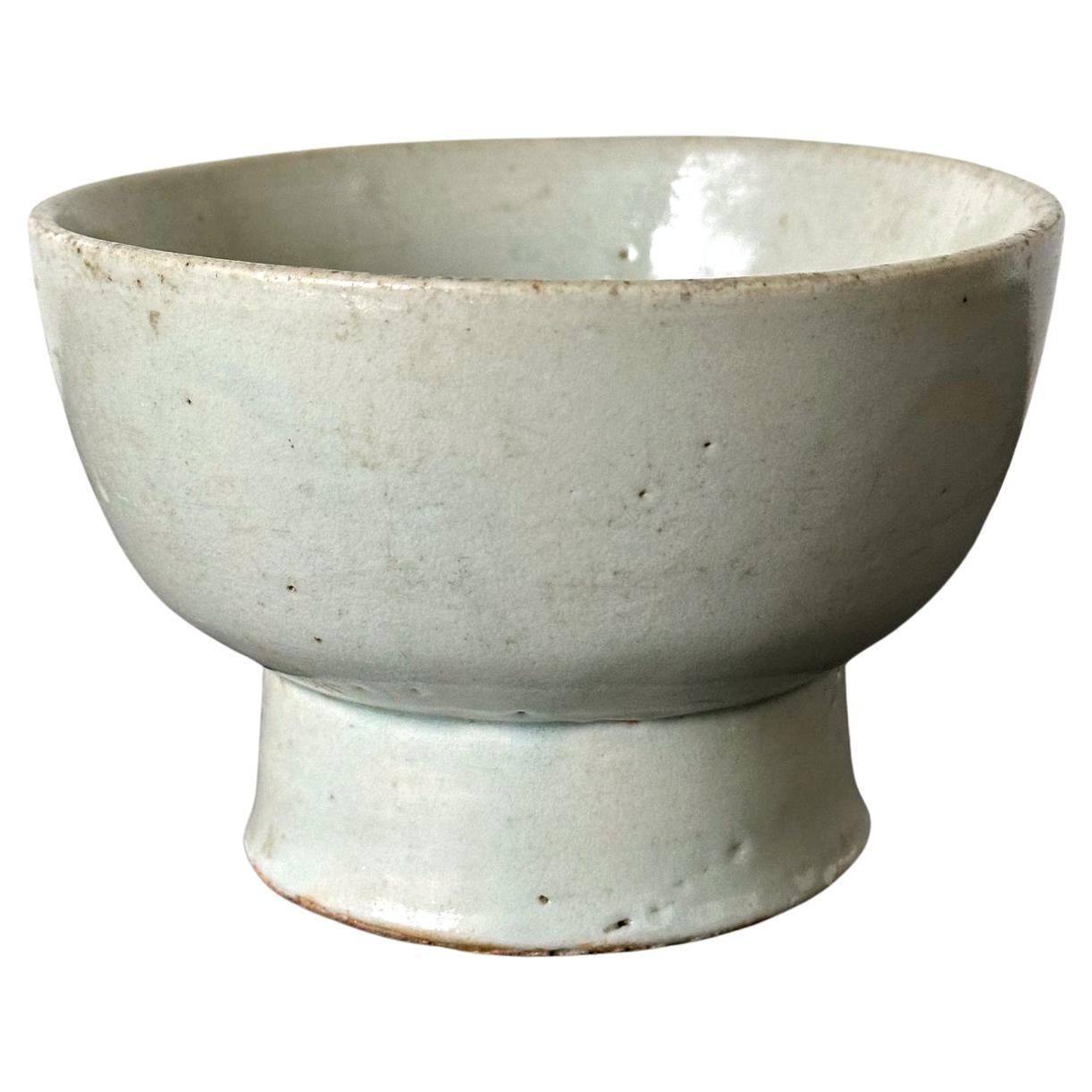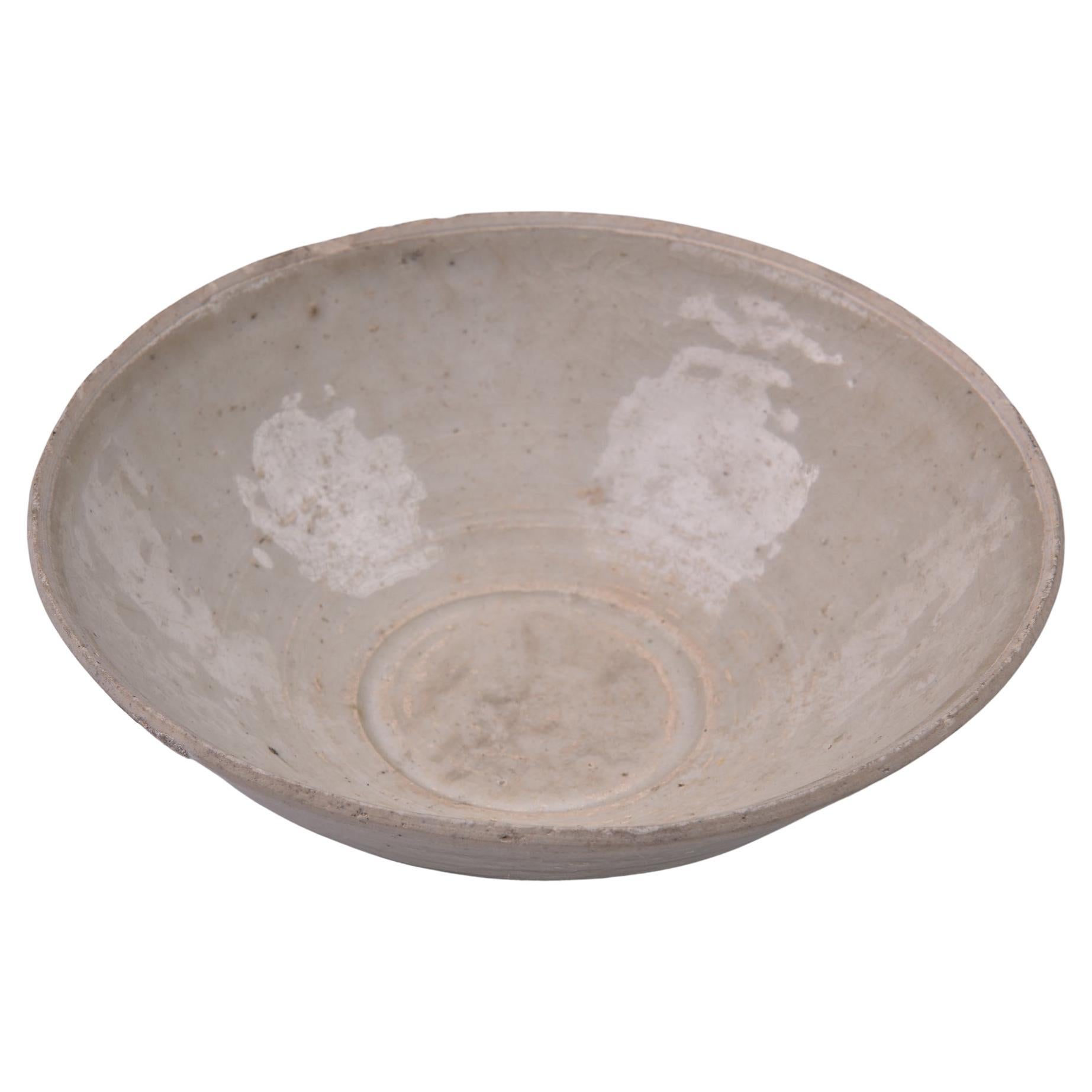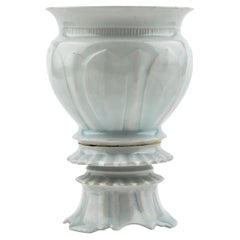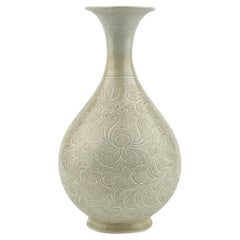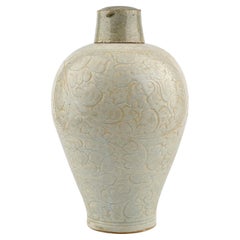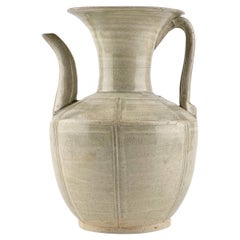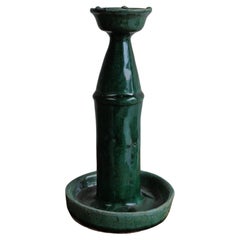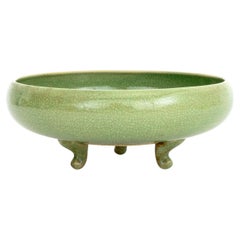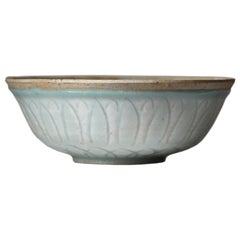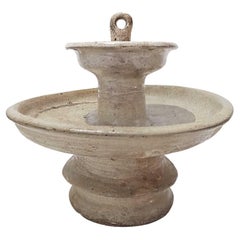Items Similar to Stem Cup and Stand, Song Dynasty(960~1279)
Want more images or videos?
Request additional images or videos from the seller
1 of 14
Stem Cup and Stand, Song Dynasty(960~1279)
$2,495
$4,99050% Off
£1,893.15
£3,786.3050% Off
€2,164.65
€4,329.2950% Off
CA$3,484.84
CA$6,969.6850% Off
A$3,874.67
A$7,749.3350% Off
CHF 2,023.14
CHF 4,046.2750% Off
MX$47,164.12
MX$94,328.2550% Off
NOK 25,814.35
NOK 51,628.6950% Off
SEK 24,186.81
SEK 48,373.6250% Off
DKK 16,155.15
DKK 32,310.3050% Off
Shipping
Retrieving quote...The 1stDibs Promise:
Authenticity Guarantee,
Money-Back Guarantee,
24-Hour Cancellation
About the Item
Five-lobed cup, featuring a delicate rim, is supported by a short, gently spreading foot. The accompanying stand rises elegantly from a broad base to a plate with an elevated, foliate-edged rim. The interior showcases a flower-head-shaped cup stand encircled by a band of intricate floral motifs. Both the cup and stand are coated in a smooth, creamy glaze, adding a sense of refinement and harmony to the piece.
Period : Southern Song-Yuan Dynasty(12th-14th century)
Type : Jar
Medium : White ware
Size : 25cm(Height), 10.5cm(Mouth Diameter)
Condition : Good
Provenance : Acquired in late 1990s from Hongkong
Reference :
1) Guardian - 2017 Autumn Auctions - Lot 23 - A RARE WHITE-GLAZED FOLIATE BOWL AND STAND(NORTHERN SONG DYNASTY
(Price realised : HKD 70,800 / Type : related)
2) Bonhams - Ben Janssens Oriental Art From Spink to Maastricht 1 – 11 November 2024 - A DINGYAO FIVE-LOBED STEM CUP AND STAND
(Price realised : £7,680 / Type : related)
- Dimensions:Height: 3.75 in (9.5 cm)Diameter: 4.73 in (12 cm)
- Materials and Techniques:Ceramic,Glazed
- Place of Origin:
- Period:
- Date of Manufacture:960-1279
- Condition:Minor losses. There is some loss along the rim of the stand, while the rest shows natural oxidation marks characteristic of excavated artifacts.
- Seller Location:seoul, KR
- Reference Number:1stDibs: LU9577242343782
About the Seller
4.8
Gold Seller
Premium sellers maintaining a 4.3+ rating and 24-hour response times
Established in 1999
1stDibs seller since 2023
38 sales on 1stDibs
Typical response time: <1 hour
- ShippingRetrieving quote...Shipping from: seoul, Korea South
- Return Policy
Authenticity Guarantee
In the unlikely event there’s an issue with an item’s authenticity, contact us within 1 year for a full refund. DetailsMoney-Back Guarantee
If your item is not as described, is damaged in transit, or does not arrive, contact us within 7 days for a full refund. Details24-Hour Cancellation
You have a 24-hour grace period in which to reconsider your purchase, with no questions asked.Vetted Professional Sellers
Our world-class sellers must adhere to strict standards for service and quality, maintaining the integrity of our listings.Price-Match Guarantee
If you find that a seller listed the same item for a lower price elsewhere, we’ll match it.Trusted Global Delivery
Our best-in-class carrier network provides specialized shipping options worldwide, including custom delivery.More From This Seller
View AllQingbai Lotus Censer, Song Dynasty
Located in seoul, KR
This exquisite Qingbai piece, acquired in Hong Kong in the late 1990s, is a high-quality artifact from the Southern Song Dynasty, likely produced at the Hutian Kiln. The base exhibit...
Category
Antique 15th Century and Earlier Hong Kong Antiquities
Materials
Ceramic
$10,000 Sale Price
50% Off
Qingbai Yuhuchunping Vase Porcelain, Song Dynasty
Located in seoul, KR
Covered with a fine bluish glaze, the body entirely decorated with an incised decoration of elegant leafy scrolls and blooming lotuses. "Yuhuchunping" translates to 'spring wine bott...
Category
Antique 15th Century and Earlier Hong Kong Ceramics
Materials
Ceramic, Porcelain
$7,950 Sale Price
50% Off
A Qingbai Carved Meiping Porcelain, Song Dynasty
Located in seoul, KR
The vase exhibits a finely crafted structure, characterized by its wide shoulders and elongated, tapering sides, topped with a compact, ribbed cylindrical neck. Its exterior is adorn...
Category
Antique 15th Century and Earlier Hong Kong Ceramics
Materials
Ceramic, Porcelain
$6,965 Sale Price
65% Off
A Zhejiang Porcelain Ewer, Northern Song Dynasty
Located in seoul, KR
The oviform body is divided into few lobes. All covered in a finely crackled pale olive-green glaze. The surface and glaze characteristics are definitive, confirming the authenticity...
Category
Antique 15th Century and Earlier Hong Kong Antiquities
Materials
Porcelain
$2,925 Sale Price
35% Off
Rare Boshan Incense Burner Yue Celadon, Jin dynasty
Located in seoul, KR
The Boshan incense burner is particularly notable among Han dynasty incense burners for its unique shape. Designed to resemble a mountain or even a mythical mountain, it is characterized by its pointed peaks that rise upwards. These peaks often function as vents for the smoke, creating an effect reminiscent of a volcanic eruption.
The body of the incense burner is typically round, with multiple small peaks surrounding a central, larger peak. The material used is mainly ceramic, although there are instances where they were made of bronze. It is presumed that this incense burner was used for religious or ceremonial purposes during its time. The colors of these burners are usually in shades of pale green or greyish brown, with the application of glaze to achieve a variety of colors on occasion.
Such incense burners are often found in tombs or ritual sites, and their purpose was to burn incense for purification of space or to produce pleasant aromas. The Boshan incense burner also represents a significant cultural heritage, showcasing the craftsmanship and artistic values of the period. Today, it is considered a quintessential example of ancient Chinese art.
Period : Han-Jin Dynasty
Type : Incense Burner
Medium : Yue celadon...
Category
Antique 15th Century and Earlier Hong Kong Han Antiquities
Materials
Stoneware
$5,960 Sale Price
60% Off
Qingbai Bowl with carving of crane, Song Dynasty
Located in seoul, KR
The crane, a traditional symbol of longevity and auspiciousness, is prominently placed at the center, creating a harmonious and aesthetically balanced effect. The border of the dish ...
Category
Antique 15th Century and Earlier Hong Kong Chinese Export Antiquities
Materials
Porcelain
$1,192 Sale Price
20% Off
You May Also Like
Chinese Ceramic 'Shiwan' Candle Holder
Located in Antwerpen, BE
This Shiwan ware oil lamp from the Mid-20th century features a green glaze. Shiwan ware is a style of Chinese pottery from the Shiwanzhen district near Guangdong, China. A elegant de...
Category
20th Century Chinese Candle Lamps
Materials
Ceramic
$299 / item
Chinese Longquan Type Porcelain Tripod Censer
Located in Astoria, NY
Chinese Longquan Type Celadon Glazed Porcelain Tripod Censer, on three scrolled feet. 3.25" H x 8.25" Diameter. Provenance: From the Upper East Side Apartment of a Former Ambassador.
Category
Antique 19th Century Chinese Qing Ceramics
Materials
Porcelain
Qinqbai Lobed Conical Bowl, Chinese Probably Song Dynasty
Located in West Palm Beach, FL
A Qinqbai lobed conical bowl, Chinese,
probably Song Dynasty
Measures: Height 1 in. (2.54 cm.), diameter 5.06 in. (12.85 cm.)
Category
Antique 19th Century Ceramics
Materials
Ceramic
Ceramic Lamp, Thailand, 15th Century
Located in New York, NY
A stoneware lamp from Si Satchanalai, Thailand, 15th-16th Century.
Two-tiered round shape, glazed in earthly beige color, rustic appearance.
11 inches in diameter, 8 inches high. ...
Category
Antique 15th Century and Earlier Thai Other Ceramics
Materials
Stoneware
Small Korean White Ceramic Stem Bowl Joseon Dynasty
Located in Atlanta, GA
A ceramic stem bowl with high cylindrical pedestal foot in white glaze from Korea, circa 18 centuries of late Joseon Dynasty. By shape, this piece appears to be a ceremonial vessel t...
Category
Antique 18th Century Korean Archaistic Ceramics
Materials
Ceramic
Antique Chinese Song Little Bowl
Located in Alessandria, Piemonte
Antique little Chinese bowl from my personal collection after 35 years and never exhibited to the public.
Simply elegant, very fine, for any use on any elegant table.
Category
Antique 15th Century and Earlier Chinese Other Ceramics
Materials
Porcelain
More Ways To Browse
Stem Cup
Ceramic Flower Stand
Antique Cup Plates
Song Dynasty
Song Dynasty Furniture
Dynasty Bowl
Song Bowl
Maastricht Plate
Song Dynasty Jar
Hong Kong Plate
Chinese Doll House
Gandhara Buddha
Japanese Pillow Vase
Tibetan Conch Shell
Vintage Indigo Kimono
Northern Wei Dynasty Painted Pottery
Chinese Zodiac Figures
Jingdezhen Teapot
